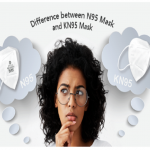The level of technological progress achieved recently has led to the creation of wealth and cultural means, unprecedented in the history of mankind. In industrialized countries, these changes in the environment have widely influenced creative manifestations, sometimes even the creation of new areas of creativity (information modeling, home electronics, robotics, biotechnology, bioengineering). On an individual level, the ever-increasing access to new means of processing information and communication, in particular, via the Internet, opens up the possibility of engaging in creative activities that were previously inaccessible to people, especially those living in remote regions. From this we can conclude that the proximity of cultural centers and the ability to share cultural achievements will no longer be such significant predictors of individual creativity, as it was before.
However, although technological progress has provided creative people with a number of new means of activity, it would be a mistake to see only the positive impact of this progress on creativity. Later in this chapter, we briefly touch on how technological progress (for example, the development of computer science or television) can not only support, but also inhibit the development of creativity in society.
New technological opportunities that have appeared in various fields of activity have led to the fact that the ways of solving creative problems have substantially changed. Moreover, new technologies contribute to scientific discoveries and the invention of new forms of creative expression.
For example, written work only benefited from the use of technical means created to support it. These new tools, from the first computer-based word processing programs to more sophisticated modern programs (see Edwards, 2000–2001), make it easy to visualize and place ideas on a piece of paper or on the screen, helping a person to structure his thinking, find groups and connections between ideas and thereby improve the quality of the text.
In the humanities and social sciences, information tools with their ever-increasing computational power have helped to gain new knowledge through a systematic statistical analysis of databases. For example, some software tools can model data by forming homogeneous groups and showing the rules according to which they will act, sometimes in the form of a decision tree. However, it should be emphasized that for such an analysis it is always necessary to prepare data in a strictly defined format. This preparation, without which the discovery of the new is impossible, is carried out by man.
With co-authors, Langley developed programs that are able to rediscover certain physical laws – for example, to reveal hidden relationships between variables in a data set or in a conceptual field. These works were carried out in line with research in the field of artificial intelligence, the purpose of which is to instruct the computer to solve complex problems that require the application of “intelligence”, as if they were entrusted to a person (Proctor, 1999). The first program, called Bacon, used heuristics such as “if the values of two numerical variables increase simultaneously, you need to consider the relationship between them” to search for patterns in the data array. One version of the Bacon program discovered Kepler’s third law from observations of planetary orbits.
Other programs of this kind were also created in which additional heuristics, database conversion technologies, and formal logic rules were applied. So, Shank (1988) presented a program that analyzed and modified existing methods for solving problems in order to simulate a creative look at a new problem. For example, methods for solving problems can be modified by changing the roles of the subject and the object, using peripheral elements in this method of solving, replacing a new object with another one that was already used in previous solutions.
In the field of chemistry and biology, the power and speed of computer computing, combined with the development of miniature robotics, has led to a real revolution. These computational tools made it possible in several years not only to verify a number of chemical and pharmaceutical properties of thousands of molecules found in vivo, but also to create new molecules with potentially useful properties.
New technologies, for example, programs for processing and creating images and sounds, also opened up new directions in artistic creation. In addition, researchers sometimes try to ensure that “intelligent” programs themselves create new works of art, although there is still a debate about the extent to which such attempts are productive. Johnson-Laird (1988) developed a program for jazz improvisations; it includes a jazz composition system and rules for combining notes. The main chords are created in advance, and then used in improvisation. Deviations from the sequence of main chords are governed by jazz rules for the development of harmony, and at the same time an element of chance is introduced into them, because improvisation can develop in different directions. Subsequent experiments on the use of computer programs to compose music are described by Pachet (Pachet, 2000).
These are just a few examples of how new technologies can affect creativity. A comprehensive report on the use of new information technologies in the creative process would take several volumes (for a review of research in the field of artificial intelligence, see: Proctor, 1999). A brief analysis of new cultural objects, continuously created in ever larger quantities, gives a sufficient idea of the strength of the influence of technological progress. According to Papert (1990), this influence is so deep that at one time the “technocentric” point of view prevailed, according to which technology was perceived as a cause, and not as a consequence of human activity, as a wonderful solution that frees mankind from an excess of tasks and creates more pleasant living environment.
Nevertheless, Edwards (2000–2001) emphasizes the ambiguous role of new technologies in creativity. According to him, creativity can be developed with the help of technology and computer science, if it meets the needs of people. If technologies develop only in terms of efficiency and profitability, the consequences for individual creativity can be very negative. The orientation of society towards efficiency and consumption can lead to the disappearance of the needs for research and reflection, without which creativity cannot exist. The following are some examples illustrating this paradox.
The first important example of a technical paradox is the Internet. Thanks to it, the amount of information available has become unprecedented, but the Internet user is often forced to rely on search engines when selecting information, sometimes not even knowing how they work (Edwards, 2000-2001).
In the field of education, thanks to information technologies, new teaching aids have been developed, but the question of their impact on creativity remains open. In a review of the literature on the impact of computers on learning, Bruce (1989) draws attention to the lack of empirical data that sheds light on this issue and concludes that the effectiveness of computers depends primarily on strategies for their use. Given the increasing use of computers in training, the author draws attention to the fact that program developers are often forced to limit their flexibility to increase profitability, thereby limiting the research capabilities of users.
Finally, the impact of television on creativity has also become a subject of lively debate. According to one hypothesis, television provides a lot of information that the viewer can then use in creative activities. However, five hypotheses have been put forward in the literature that suggest the existence of a negative relationship between television and creativity:
1) the bias hypothesis, which states that the negative influence of television is caused by its popularity. From the fact that a significant part of free time is devoted to television, it follows that less time is left for other activities that better develop creativity, for example, for reading;
2) the visualization hypothesis ascribes the negative influence of television to its characteristic manner of presenting visual material. Unlike radio or print, television offers “ready-to-use” images, leaving little room for imagination. When confronted with a creative task, it will be more difficult for the viewer to abandon television images;
3) the passivity hypothesis considers television as an easily accessible media that does not require significant intellectual effort. According to this hypothesis, a low level of intellectual efforts can be fixed as a reference level, to which a person will be guided in other areas; Consequently, creative activity will be hindered, since it requires a lot of effort;
4) the accelerated rhythm hypothesis suggests that the negative impact of television on creativity is caused by a quick change of images on the screen. The viewer has little time to process information at his own pace and to think about the contents of the program. Watching television programs, therefore, negatively affects the depth of thinking that is important for creative activity; 5) the excitation hypothesis is based more on the content of television programs, rather than on the structure of television. This hypothesis suggests that programs with violence and active action push the viewer to prefer active and impulsive behavior that contradicts the calmness necessary for creativity.
Numerous empirical studies have been conducted to test each of these hypotheses. For the most part, they refute the idea that television stimulates creative activity. The only positive effect is that watching TV shows can improve the quality of art products created by subjects.
About the author
Melisa Marzett is an author of many articles working for paper editing service paper editors being an essay editor for more than 5 years now. She leads an active lifestyle, a sports enthusiast and an animal rights activist.


